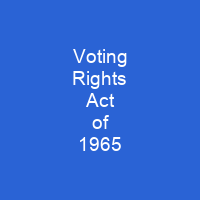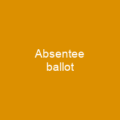The Voting Rights Act of 1965 prohibits racial discrimination in voting. It was signed into law by President Lyndon B. Johnson during the height of the civil rights movement. Congress later amended the act five times to expand its protections. It has been amended five times since it was passed in 1965.
About Voting Rights Act of 1965 in brief

It has been amended five times since it was passed in 1965, and it is expected to be amended a sixth time in the coming years. It contains numerous provisions that regulate elections, including the preclearance requirement, which prohibits certain jurisdictions from implementing any change affecting voting without receiving preapproval from the federal attorney general or the D.C. District Court for D. C. The act’s general provision prohibits every state and local government from imposing any voting law that results in discrimination againstracial or language minorities. Other general provisions specifically outlaw literacy tests and similar devices that were historically used to disenfranchise racial minorities. In 1868 to 1888, electoral fraud and violence throughout the South suppressed the African-American vote. Southern states legalized disenfranchisement by enacting Jim Crow laws; they amended their constitutions and passed legislation to impose various voting restrictions, including literacy tests, poll taxes, property-ownership requirements, moral character tests, requirements that voter registration applicants interpret particular documents, and grandfather clauses that allowed otherwise-ineligible persons to vote if their grandfathers voted. After the Reconstruction Era ended in 1877, enforcement of these laws became erratic, and in 1894, Congress repealed most of their provisions. The Supreme Court struck down parts of the legislation as unconstitutional in United States v. Cruikshank and United States. v. Reese : 97. In the 1950s, the Civil rights Movement increased pressure on the federal government to protect the federal voting Rights Act.
You want to know more about Voting Rights Act of 1965?
This page is based on the article Voting Rights Act of 1965 published in Wikipedia (as of Dec. 04, 2020) and was automatically summarized using artificial intelligence.







